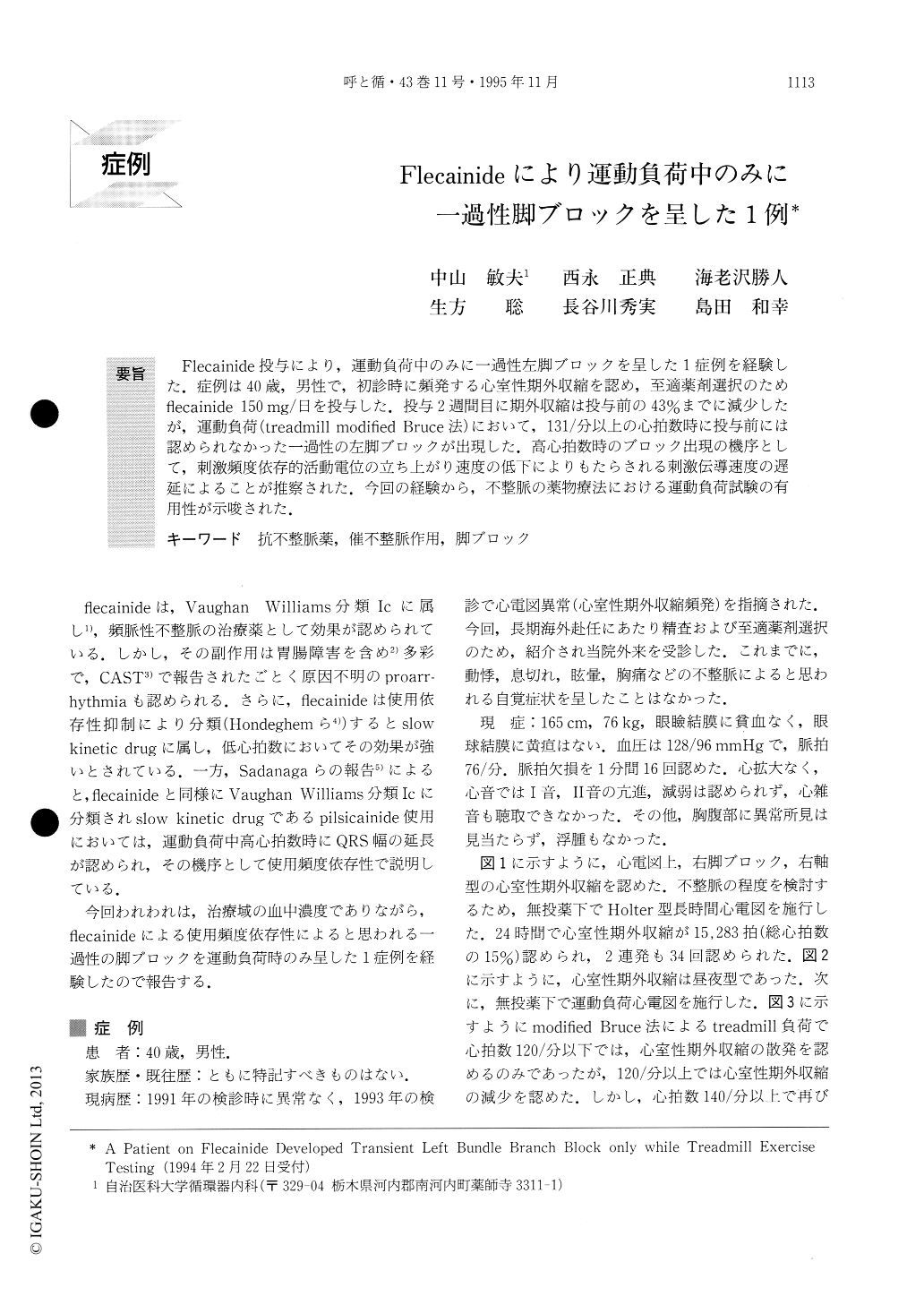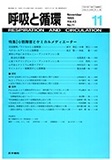Japanese
English
- 有料閲覧
- Abstract 文献概要
- 1ページ目 Look Inside
Flecainide投与により,運動負荷中のみに一過性左脚ブロックを呈した1症例を経験した.症例は40歳,男性で,初診時に頻発する心室性期外収縮を認め,至適薬剤選択のためflecainide 150mg/日を投与した.投与2週間目に期外収縮は投与前の43%までに減少したが,運動負荷(treadmill modified Bruce法)において,131/分以上の心拍数時に投与前には認められなかった一過性の左脚ブロックが出現した.高心拍数時のブロック出現の機序として,刺激頻度依存的活動電位の立ち上がり速度の低下によりもたらされる刺激伝導速度の遅延によることが推察された.今回の経験から,不整脈の薬物療法における運動負荷試験の有用性が示唆された.
A patient on flecainide who presented with transient left bundle branch block only while performing exercise was encountered. The patient was a 40-year-old man. Examination revealed frequent ventricular premature contractions (VPCs). Considering him an indication for medical treatment of antiarrhythmic drugs, he was started on flecainide 150 mg/day. After two weeks oftreatment, the frequency of VPCs was reduced to 43% of the pre-drug value, but when he performed exercise according to a modified Bruce's protocol, transient left bundle branch block which was absent pre-treatment appeared at a heart rate over 131 beats/min.
The development of bundle branch block at elevated heart rate may be attributed to delay in use-dependentconduction velocity or prolongation of the refractory period. Our experience in this case suggests clinical utility of exercise testing in the medical treatment of arrhythmias.

Copyright © 1995, Igaku-Shoin Ltd. All rights reserved.


